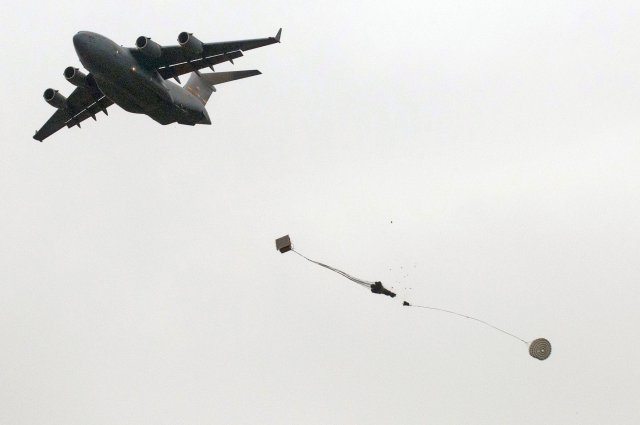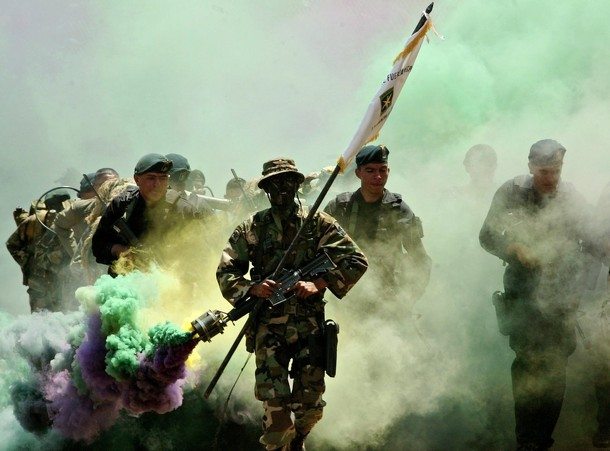Army paratroopers here completed two of three test drops Nov. 10 to certify a new water and fuel container system for airdrops in Afghanistan and elsewhere.
Each drop of two Lifeliner container-unitized bulk equipment, or CUBEs, delivered hundreds of gallons of water safely to the ground under dual, 100-foot-wide parachutes from over 1,000 feet, according to the project lead, John Mahon of the U.S. Army Natick Soldier Research, Development & Engineering Center of Natick, Mass.
A third drop scheduled for the same day was scratched due to mechanical issues aboard the aircraft, said Mahon.
The new container, a polypropylene bladder-like “blivet” nested inside a recyclable plastic box, was developed to meet specifications requested by the 101st Sustainment Brigade currently deployed to Afghanistan, he said.
The CUBE can be transported by truck or slingloaded beneath a helicopter, and unlike the old 500-gallon blivets, these 400-gallon systems can be stacked several high to reduce their storage footprint.
To meet current rigging guidelines and avoid delays, the airdropped blivets were filled to less than their maximum capacity.
The CUBE is 40 percent the cost of the current model, and when collapsed, can be handled by one person and stacked for storage.
For the test drops, the team was aided by sustainment paratroopers with the 82nd Airborne Division’s 1st Brigade Combat Team, along with parachute riggers and heavy-equipment operators from the 82nd Sustainment Brigade, he said.
Lt. Col. Paul Narowski, senior logistician with 1BCT and commander of the 307th Brigade Support Battalion, said that validated airdrop-rigging procedures will ensure that, no matter where a force is on the battlefield, 400 gallons of fuel, water or unitized supplies can be delivered by surface, slingload or airdrop.
A pioneer of low-cost, low-altitude supply drop techniques in Afghanistan, Narowski sees the CUBE system as another relatively low-cost method of resupplying small bases.
“Use of the CUBE will support objectives to draw down forces and equipment in [Operation Enduring Freedom] by providing storage and distribution capability to the warfighter at a
greatly-reduced cost,” he added.
The 11th Quartermaster heavy drop airdrop systems technician, Chief Warrant Officer 2 Terry Wright, said that because many of the civilian engineers were former riggers — Mahon served 31 years — working with them went particularly well.
Whereas a typical Army program from concept to operational tests can take 6-8 years, because the project was fast-tracked, operational testing was achieved in just over a year, Mahon said.
To date, 200 systems have already been fielded to deployed units with more on the way, he said. He hopes to certify the CUBE’s airdrop capability and have a draft of airdrop procedures ready within the next 30-60 days.











